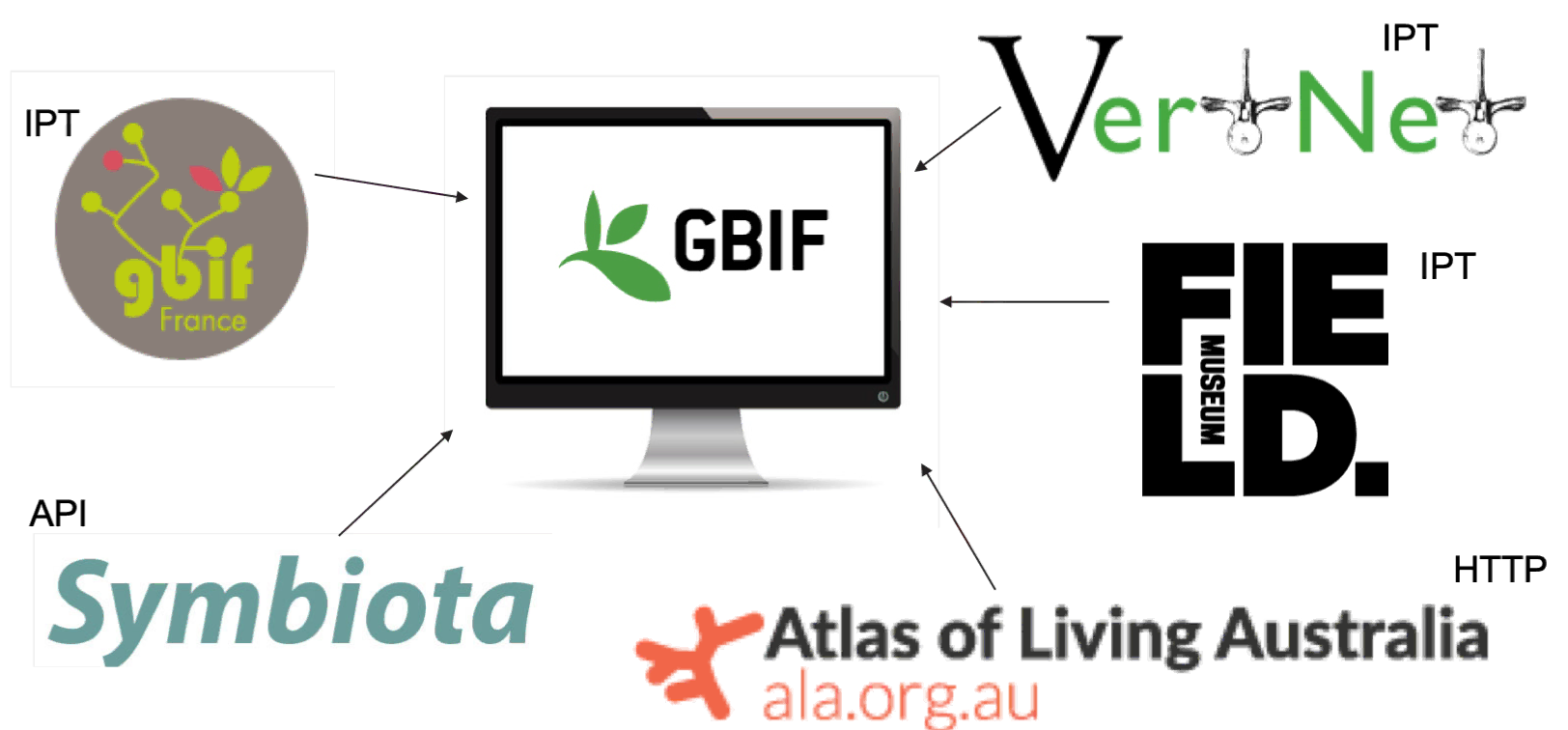How to become a data publisher for GBIF.org
Overview
Teaching: 30 min
Exercises: 30 minQuestions
What is a data publisher?
Objectives
Understand what it is to be a data publisher.
Becoming a data publishers
1. Secure institutional agreements
Before to share data through the GBIF network, you should alert administrators of your plans to publish on behalf of your institution. Sharing open data will increase the visibility of your institution, building on traditional methods like academic publications and specimen loans to bring new collaboration opportunities and international recognition through DOI-based citations.
2. Request Endorsement
To become a data publisher, your organization must request endorsement from the GBIF community. Once you have reviewed the data publisher agreement and agree in principle to share data, we encourage you to request endorsement for your organization as soon as possible to avoid delays in publishing data.
Data Publisher Agreement
Terms and conditions:
- I have read and understood GBIF’s Data Publisher Agreement and agree to its terms.
- I understand that I am seeking registration on behalf of my organization, and confirm that the responsible authorities of my organization are aware of this registration.
- I understand that my organizational information, including the contact details provided, will be made publicly available through GBIF.org.
see on GBIF.org
Data user agreement
It is also important for data publishers to carefully read the agreement between GBIF and data users see on GBIF.org
3. Select your publishing tools and partners
Your data may arrive to GBIF via different ways, or tools. Today, much of the data arrive from the Integrated Publishing Toolkit(IPT) installed at the institution, at the natioan node, at GBIF Secretariat(hosted IPT) or elesewhere. The Living Atlases platform, originally developed by the Atlas of Living Australia, also offers data publication.
Other alternatives exist: fully automated based on GBIF API or simply by putting on the web (HTTP installation).

4. Data Management Plan
As Data publishers, you will decide:
- the data you want to publish to GBIF
- the dataflow between you and GBIF
- the tools you will use for publishing
- the richness and precision of your data
- the license/waiver you want to apply yo your date
- the description of your data(metadata)
- the contacts for your institution and datasets
We would suggest you to document all this in your institution/unit Data Management Plan.
Exercise
Please take some time to answer these questions:
- Is your institution ready to become a data publisher?
- What are your reasons or incentive?
- What are your fears or reticence?
- Do you need to convince your management?
- Do you have enough arguments for that?
Incentives for publishing open-access biodiversity data
An important part of GBIF’s mission is to promote a culture in which people recognize the benefits of publishing open-access biodiversity data, for themselves as well as for the broader society.
By making your data discoverable and accessible through GBIF and similar information infrastructures, you will contribute to global knowledge about biodiversity, and thus to the solutions that will promote its conservation and sustainable use. Data publishing enables datasets held all over the world to be integrated, revealing new opportunities for collaboration among data owners and researchers. Publishing data enables individuals and institutions to be properly credited for their work to create and curate biodiversity data, by giving visibility to publishing institutions through good metadata authoring. This recognition can be further developed if you author a peer-reviewed data paper, giving scholarly recognition to the publication of biodiversity datasets. Collection managers can trace usage and citations of digitized data published from their institutions and accessed through GBIF and similar infrastructures. Some funding agencies now require researchers receiving public funds to make data freely accessible at the end of a project.
see How to become a data publisher chapter
Glossary
- GBIF Participant
- Signatory of the GBIF Memorandum of Understanding (MoU)
- GBIF Secretariat
- Legal entity empowered by the GBIF Participants to enter into contracts, execute the Work Programme, and maintain the central services for the GBIF network including software components and updates, interfaces, indexing and registry services, helpdesk and relevant training.
- GBIF network
- The infrastructure consisting of the central services of the GBIF Secretariat, Participant Nodes and Data Publishers. Making data available through the GBIF network means registering and advertising the pertinent services via the GBIF central services.
- Participant Node
- An organisational unit designated by the GBIF Participant to coordinate activities in its domain. It may also provide data.
- Biodiversity data
- Primary data on specimens, observations, names, taxonomic concepts, and sites, and other data on biological diversity.
- Metadata
- Data describing the attributes and combinations of biodiversity data.
- Data
- Biodiversity data and metadata.
- Data publishing
- The process of and agreements for making data freely and universally available on the Internet.
- Data Publisher
- A custodian of data making it technically available. This may or may not be the data owner. If not they will have declared to GBIF that they have permission to make the data available.
- Data User
- Anyone who uses the Internet to access data through the GBIF network.
- Owner of data
- The legal entity possessing the right resulting from the act of creating a digital record. The record may be a product derived from another, possibly non-digital product, which may affect the right.
- Sensitive data
- Any data that the Data Publisher does not want to make available, e.g. precise localities of endangered species.
Key Points
Use the DOI